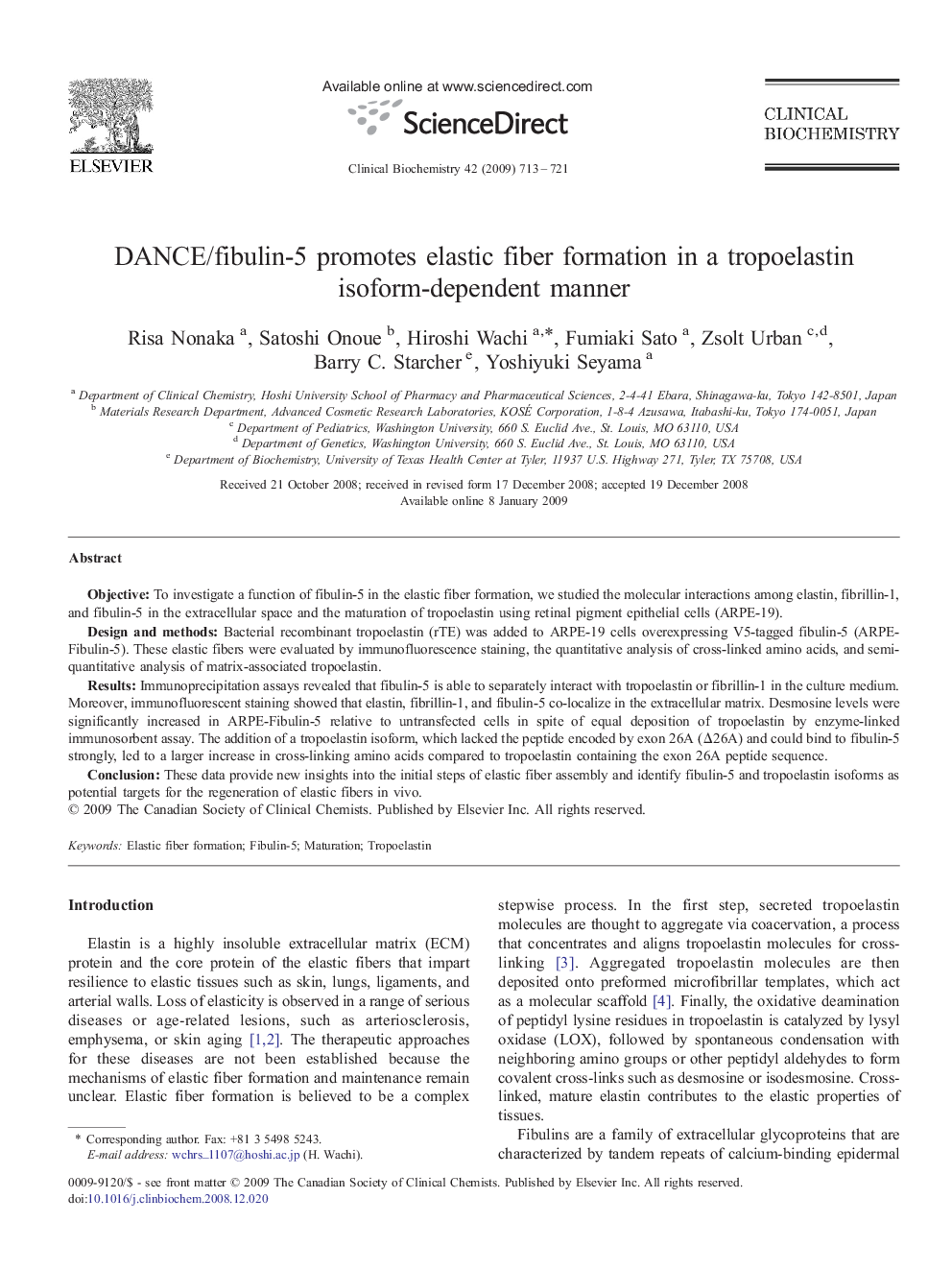| کد مقاله | کد نشریه | سال انتشار | مقاله انگلیسی | نسخه تمام متن |
|---|---|---|---|---|
| 1971142 | 1538904 | 2009 | 9 صفحه PDF | دانلود رایگان |

ObjectiveTo investigate a function of fibulin-5 in the elastic fiber formation, we studied the molecular interactions among elastin, fibrillin-1, and fibulin-5 in the extracellular space and the maturation of tropoelastin using retinal pigment epithelial cells (ARPE-19).Design and methodsBacterial recombinant tropoelastin (rTE) was added to ARPE-19 cells overexpressing V5-tagged fibulin-5 (ARPE-Fibulin-5). These elastic fibers were evaluated by immunofluorescence staining, the quantitative analysis of cross-linked amino acids, and semi-quantitative analysis of matrix-associated tropoelastin.ResultsImmunoprecipitation assays revealed that fibulin-5 is able to separately interact with tropoelastin or fibrillin-1 in the culture medium. Moreover, immunofluorescent staining showed that elastin, fibrillin-1, and fibulin-5 co-localize in the extracellular matrix. Desmosine levels were significantly increased in ARPE-Fibulin-5 relative to untransfected cells in spite of equal deposition of tropoelastin by enzyme-linked immunosorbent assay. The addition of a tropoelastin isoform, which lacked the peptide encoded by exon 26A (Δ26A) and could bind to fibulin-5 strongly, led to a larger increase in cross-linking amino acids compared to tropoelastin containing the exon 26A peptide sequence.ConclusionThese data provide new insights into the initial steps of elastic fiber assembly and identify fibulin-5 and tropoelastin isoforms as potential targets for the regeneration of elastic fibers in vivo.
Journal: Clinical Biochemistry - Volume 42, Issues 7–8, May 2009, Pages 713–721